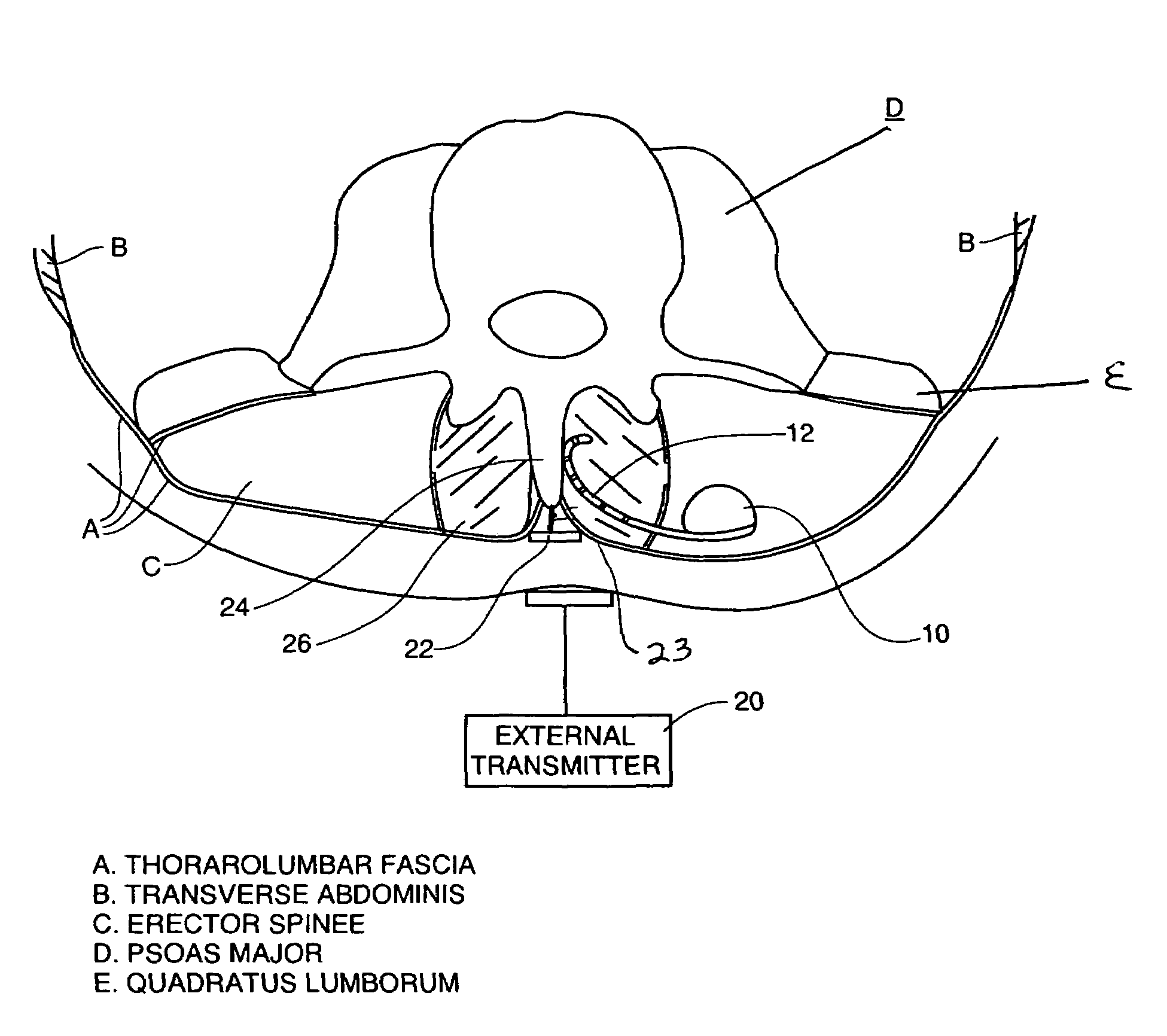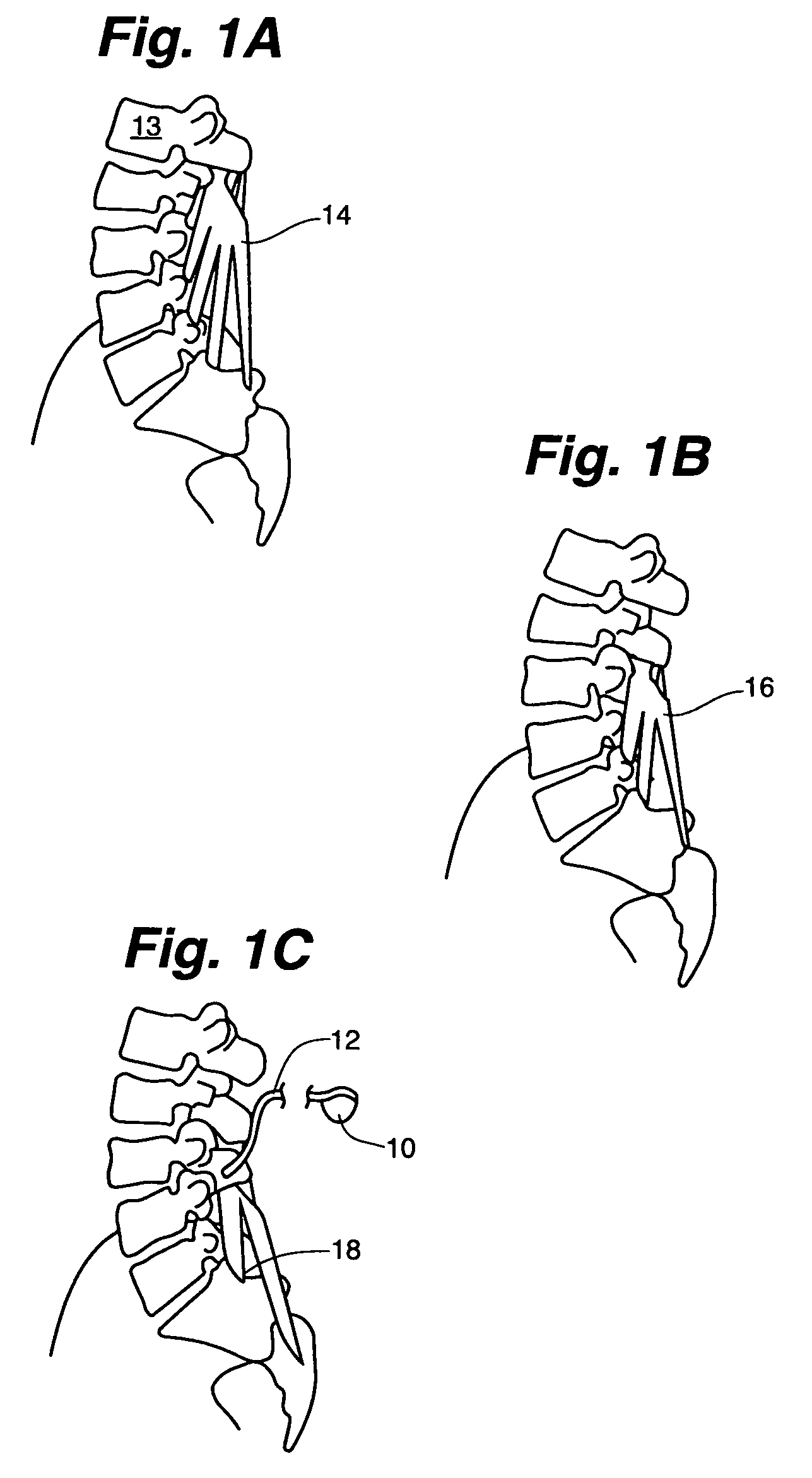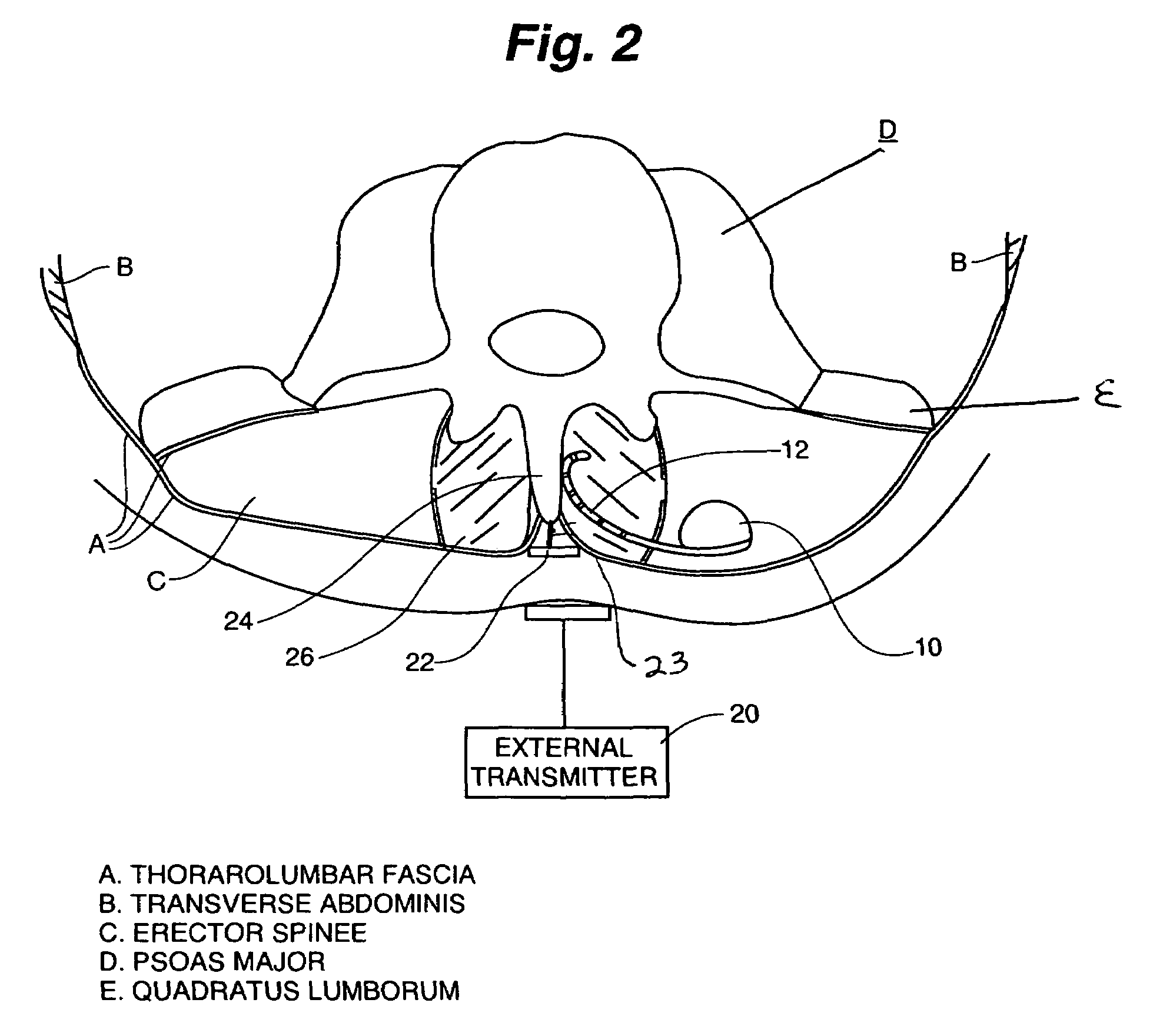Muscle stimulator
a stimulator and muscle technology, applied in the field of medical devices, can solve problems such as setting up an overall decline in back health, and achieve the effects of reducing the severity of pain, reducing the frequency of pain exacerbations, and reducing back health
- Summary
- Abstract
- Description
- Claims
- Application Information
AI Technical Summary
Benefits of technology
Problems solved by technology
Method used
Image
Examples
Embodiment Construction
[0031]FIG. 1 shows a schematic representation of the back and in particular shows the connection of three sets of multifidus (MF) muscle fascicles labeled 14, 16 and 18 in panel of FIG. 1A, FIG. 1B and FIG. 1C respectively. In each panel the identified multifidus muscles are portrayed in a lateral view attached to a set of spinal vertebrae. Note that MF fascicles 14 arising from the spinous process and common tendon of L1 (the first lumbar vertebra) 13 insert into the mamillary processes of L4, L5, and S1, and the posterior superior iliac spine. Likewise MF fascicles 16 arising from the base of the spinous process and common tendon of L2 insert into the mamillary processes of L5 and S1, the posterior superior iliac spine, and the iliac crest. MF fascicles 18 arising from the base of the spinous process and common tendon of L3 insert into the mamillary process of the sacrum, and a narrow area extending caudally from the caudal extent of the posterior superior iliac spine to the later...
PUM
 Login to View More
Login to View More Abstract
Description
Claims
Application Information
 Login to View More
Login to View More - R&D
- Intellectual Property
- Life Sciences
- Materials
- Tech Scout
- Unparalleled Data Quality
- Higher Quality Content
- 60% Fewer Hallucinations
Browse by: Latest US Patents, China's latest patents, Technical Efficacy Thesaurus, Application Domain, Technology Topic, Popular Technical Reports.
© 2025 PatSnap. All rights reserved.Legal|Privacy policy|Modern Slavery Act Transparency Statement|Sitemap|About US| Contact US: help@patsnap.com



